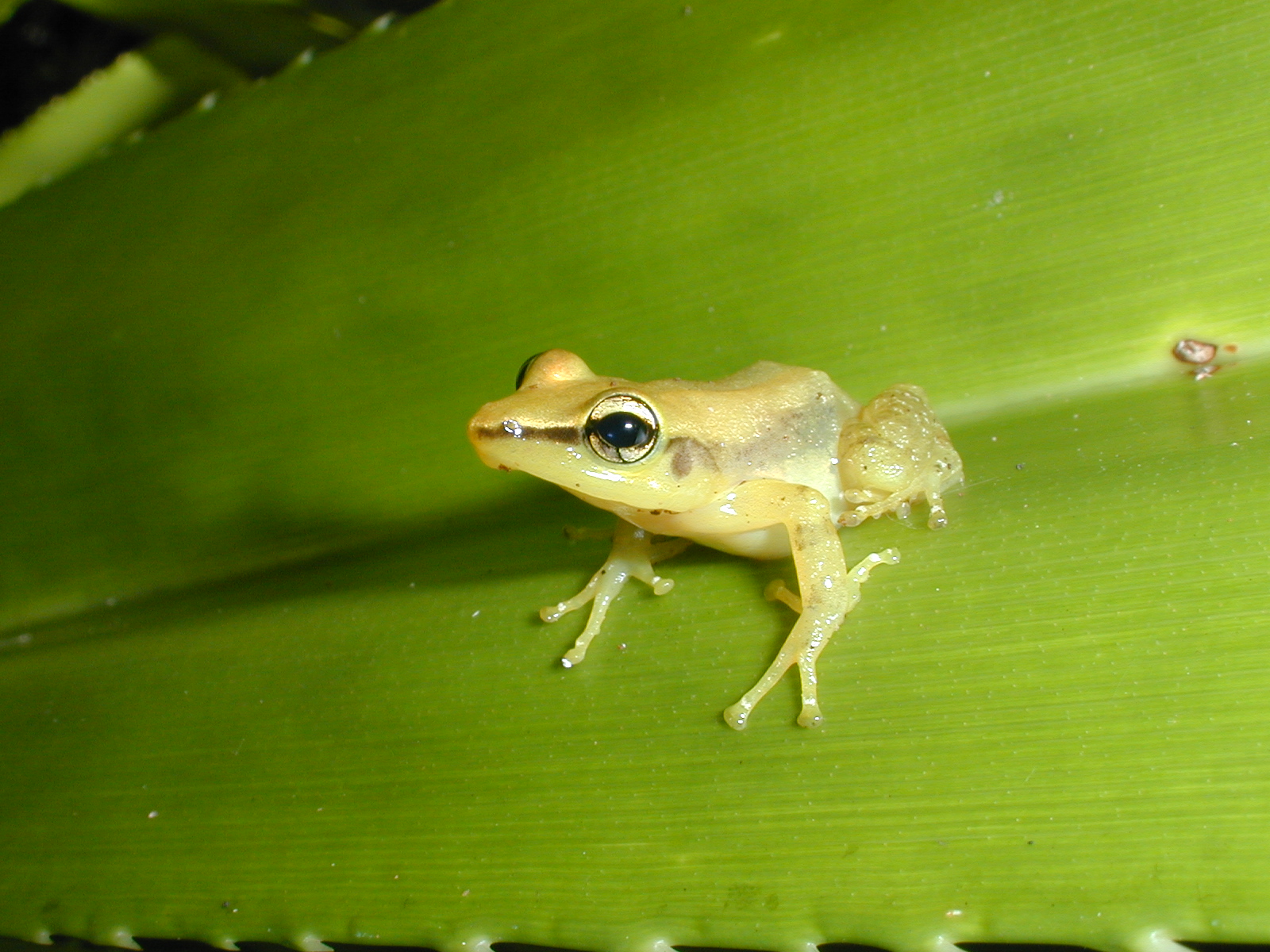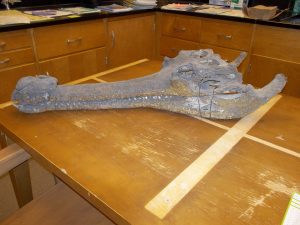I have a gharial in my office. What is a gharial you ask? Something Dr. Seuss dreamed up? No, actually it is a very distinctive crocodilian only found in a few river basins on the Indian subcontinent. They are highly aquatic, eat primarily fish and can reach over 20 feet in length and weigh over 2,000 pounds.
How do I get any work done with a hungry gharial in my office, you ask? Don’t I spend all day just avoiding it’s snapping jaws instead of grading tests or responding to email? Well, as you can see below, this particular gharial is rather dead.
I honestly have no idea what this huge gharial skull is doing in Wooster, Ohio. It appears to have been here for some years, but where it came from and who collected it has been lost to the mists of time. What I do know is that this is the skull of a male, as the bulbous growth on the tip of the snout is only found in males. Apparently, male gharials use this structure to amplify “hisses” that come out of the nostrils to attract females. On a still day, the sound of a gharial “hiss” can be heard for up to a kilometer. Unfortunately, gharial hisses are very infrequently heard these days as the species is listed as critically endangered. Fewer than 300 individuals are thought to currently exist and their current distribution is less than 2% of their former geographic range.
So, even if you went to India to try and see this ancient fish-eater, you’d be unlikely to see one. Come by my office instead, really, it won’t bite.


